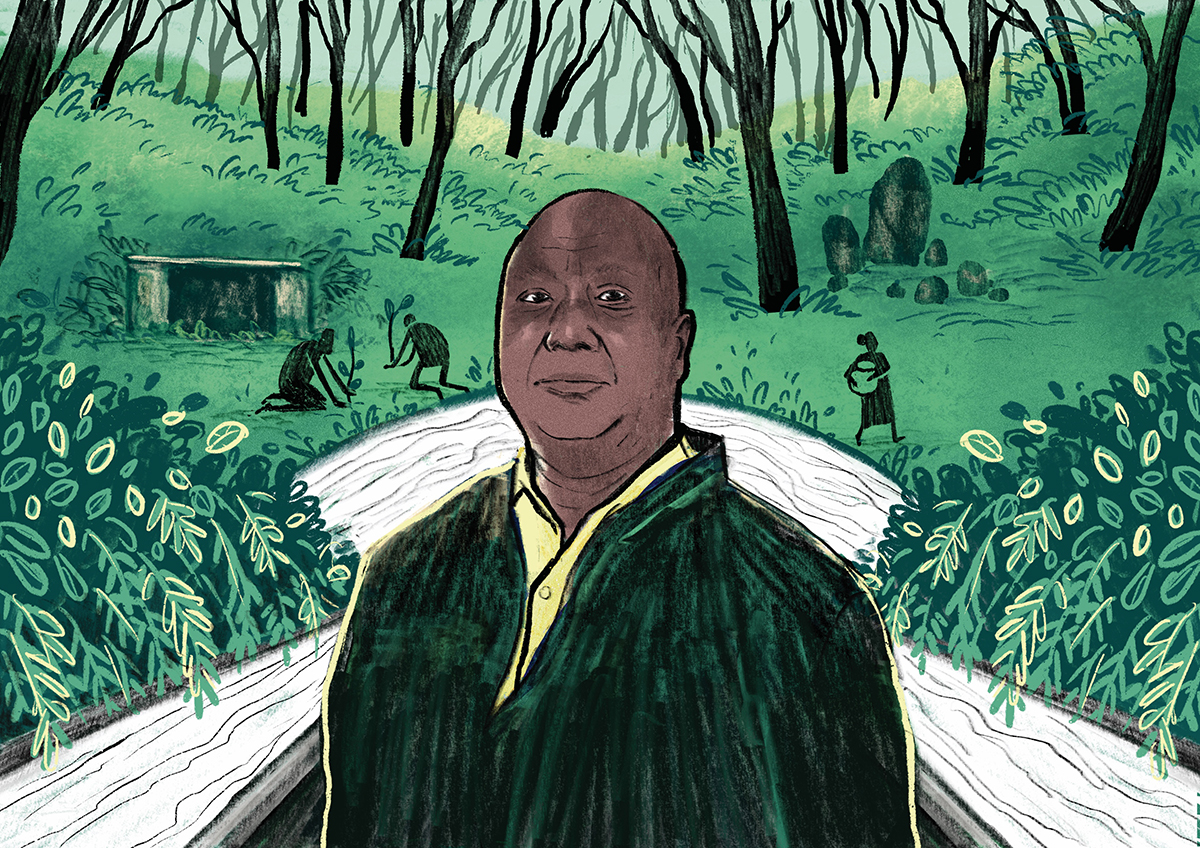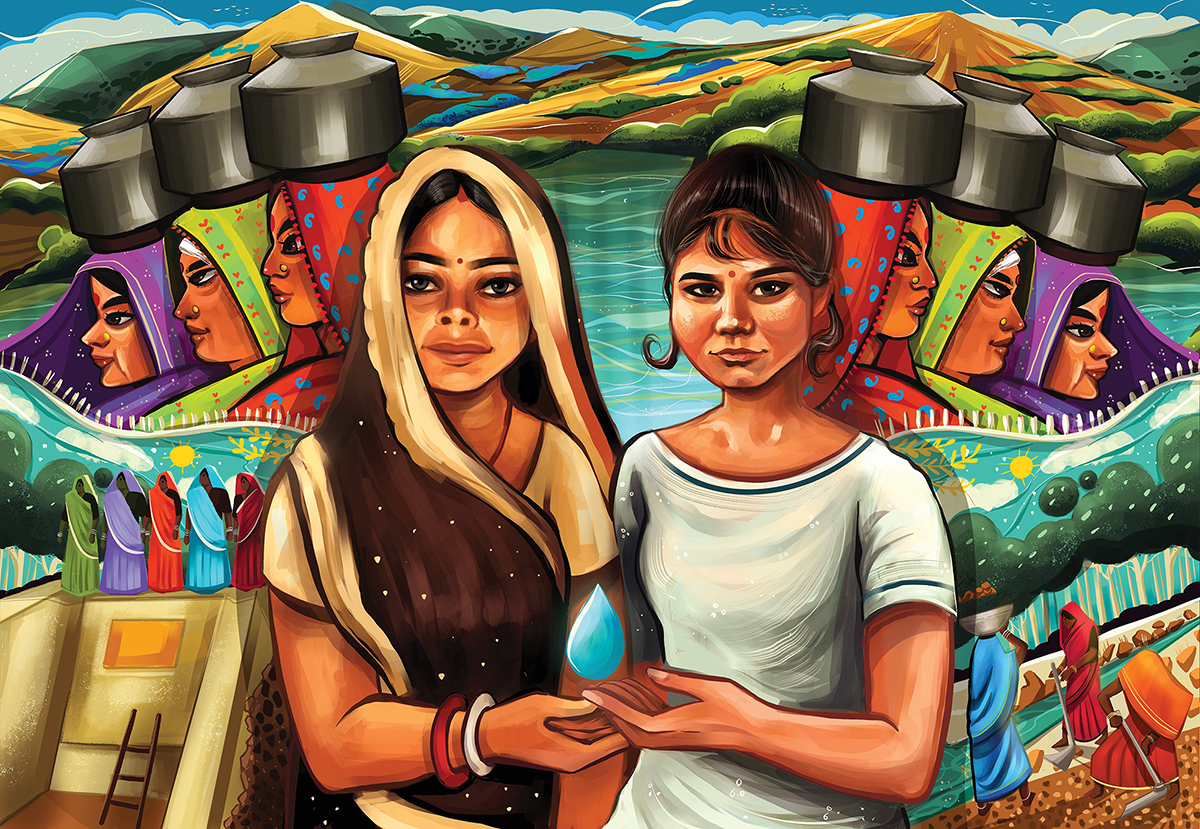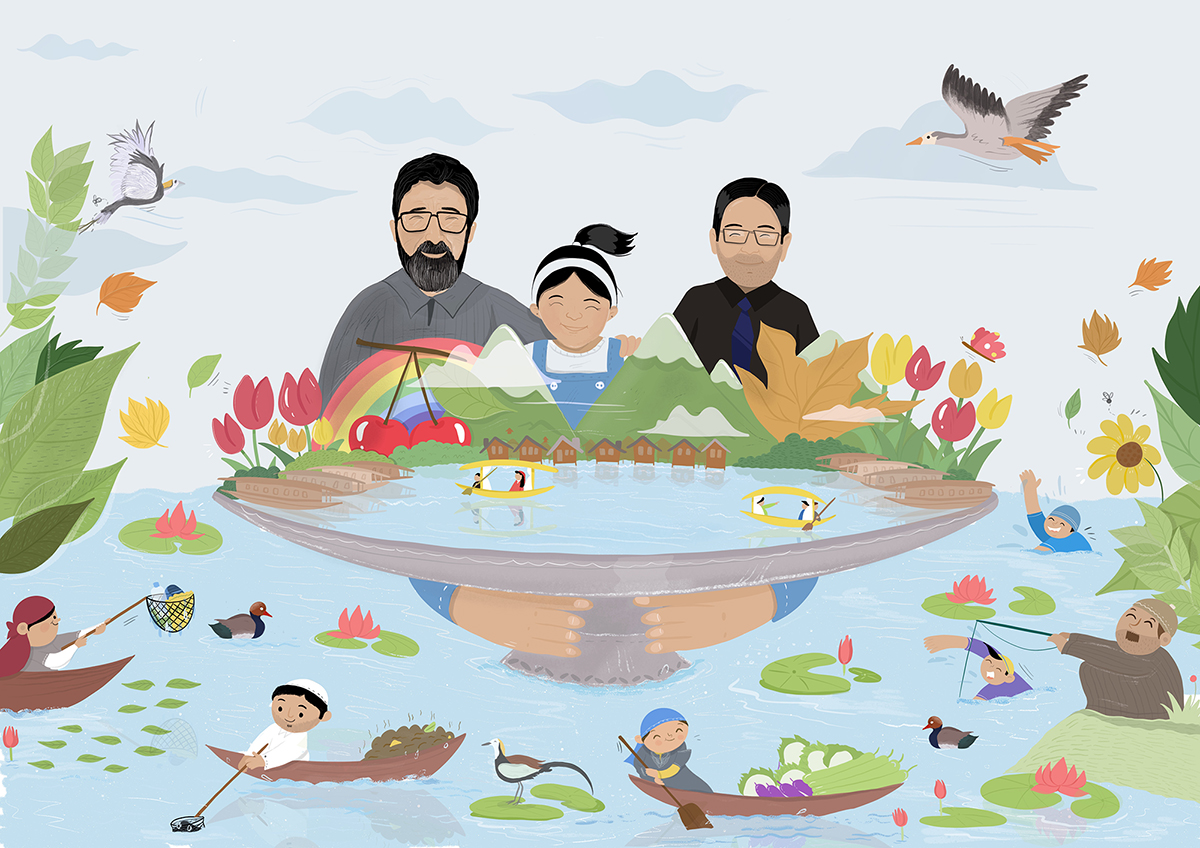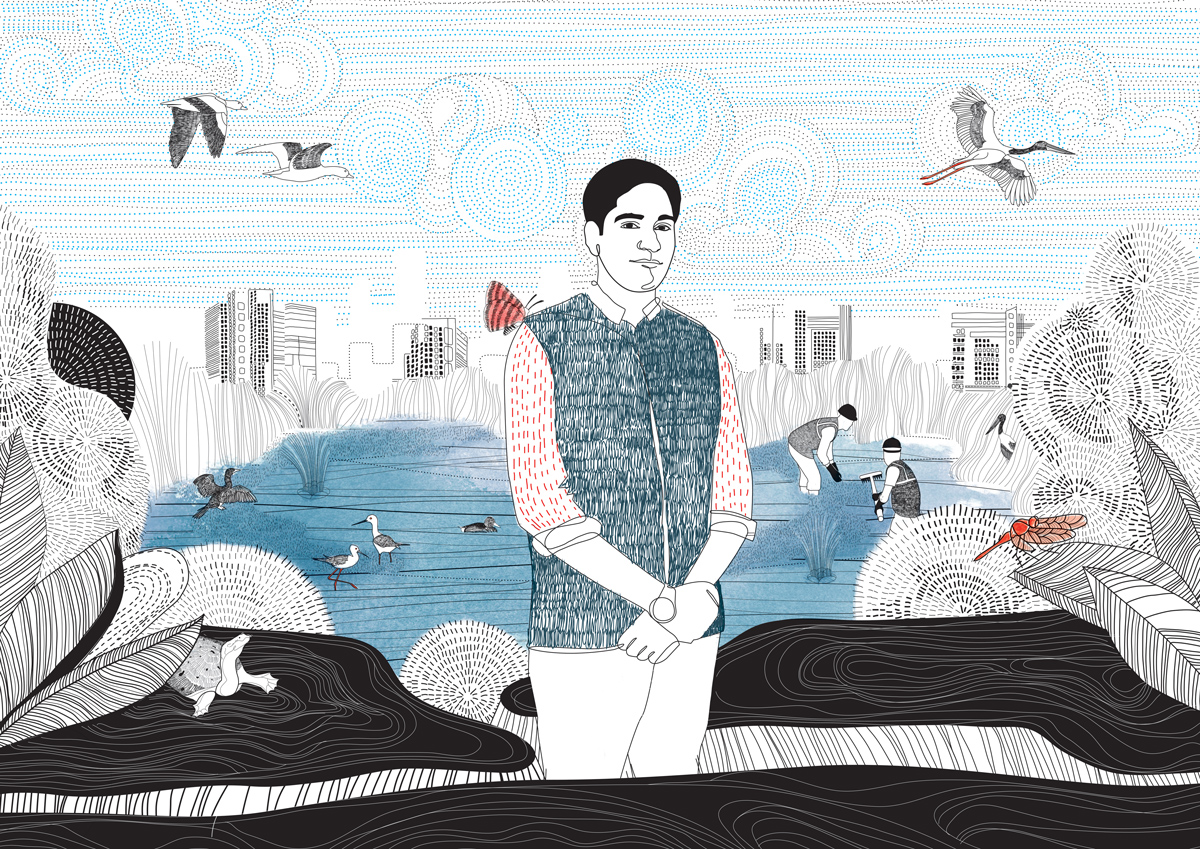- The theme of World Wetlands Day on February 2, ‘Wetlands and Water’, shines a spotlight on wetlands as a source of freshwater and encourages actions to restore wetlands and stop their loss.
- Over the past six months, Mongabay-India has been documenting inspiring stories of individuals who, by their own initiative, are protecting the country’s wetlands.
- Behind every successful individual, there is a community of supporters, mentors and well-wishers. In almost all our stories, while there is one stand out individual, he or she shines because of collective efforts in the background.
Ramveer Tanwar, a 26-year-old engineer, gave up a cushy job to work on reviving wetlands in Greater Noida. As urbanisation and modern structures have taken over the region, there’s shrinking space for nature. Wetlands, in particular, are being encroached upon and deteriorating. Tanwar has revived at least 20 ponds and lakes in Noida and Greater Noida region.
Miles away in a nondescript village in Mandya district of Karnataka, Kalmane Kaamegowda, is digging ponds for birds and wild animals over the past four decades. Kaamegowda, around 70 years of age, has dug around 16 ponds at the base of the hill in his village so the rainwater that runs down can be collected in them. Wild animals like bears, leopards, deer, foxes and more on the hill that come for the water in these ponds.
While their paths would probably never cross, the young Tanwar in urban north India and the septuagenarian Kaamegowda in rural south have an unlikely connection – both are driven by their passion to conserve wetlands. Incidentally, this passion was ignited growing up around water bodies as young boys, albeit decades apart.
Over the past six months, we at Mongabay-India, have been introduced to many such people across the country – protectors of lakes, rivers, mangroves, ponds and other water bodies in the country. We’ve been documenting their inspiring stories as part of our series on Wetland Champions.
What does a wetland mean to you?
A wetland occurs where water meets land. It could be the lake in your backyard or the river that runs through your urban hometown. It could be the water body that you see from the window of your hotel-with-a-view or it could be rice fields you drive past on a holiday. Any area inundated with water, permanently or seasonally, is a wetland.
For many thousands across the country, a wetland is more than a pretty picture. It is intrinsically linked to their very survival – it is a source of water for drinking and domestic use, for fishing and for agriculture. In many other places, the wetland is where migratory birds and other wildlife thrive. And for some, a wetland is part of a region’s environmental heritage.
The linkages in some parts are even deeper and more complex. In Bundelkhand for example, getting water home is the woman’s responsibility. But women’s participation in ensuring that their source of water remains intact, is restricted. With the loss of water bodies in villages, women have to adapt by walking longer distances to get water or bear the brunt of anger of their family members. Reviving a local wetland, in such a case, then becomes linked to health and even domestic peace!
The theme of World Wetlands Day this year, ‘Wetlands and Water’, shines a spotlight on wetlands as a source of freshwater and encourages actions to restore them and stop their loss. It reiterates that water and wetlands are connected in an inseparable co-existence that is vital to life, our wellbeing and the health of our planet.
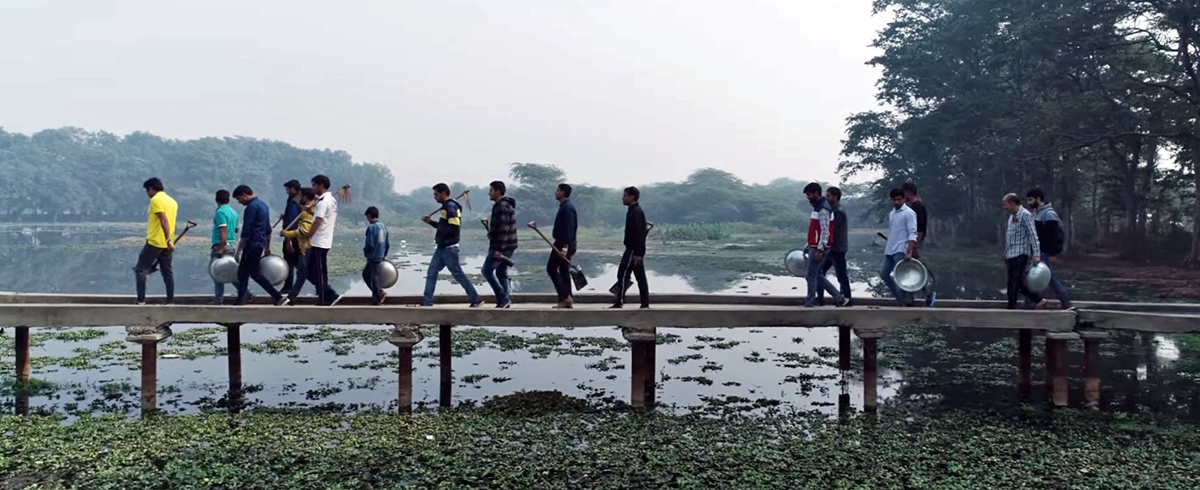
Read more: [Explainer] What are wetlands and why do we need to protect them?
The making of the Wetland Champions series
Through 15 (and counting) stories, our Wetland Champions series goes around the country, from the coast to the mountains, from big rivers to small streams and from individual heroes to active communities. And the people telling these stories constitute a network of fantastic local contributors who dished out high quality stories in the midst of a pandemic. With restrictions on travel, our contributors worked doubly hard to do their due diligence and ground-truthing of each story – from video calls to villages to weeks of research to identify a champion, from discussions with scientists and forest officials to scouting out supporters as well as detractors of the conservation efforts for a balanced view, the work behind the scenes went into weeks and sometimes months for every story.
For the first time, we also experimented with illustrations to tell these special stories – and what a visual treat it has been. The illustrators, many of them not associated with environment or news, had a unique task at hand – to tell the story of people, their inspiration and the challenges in protecting the wetland. They had to make the image look beautiful and different but also scientifically accurate. Just a glimpse of the illustrations will tell you how successfully these young illustrators fulfilled the brief.
Through this effort, there were many things we learnt which may not be apparent in every story and need a special mention. For one, all that glitters is not gold. Efforts that make for positive and inspiring stories come with their own set of challenges and if you scratch below the surface, there may be more questions than answers. The goal of the Wetland Champions stories was not to needlessly glorify positivity but in fact genuinely celebrate those who went beyond challenges and achieved success. The success, however, is not always quantifiable and can differ based on a variety of external factors, like the pandemic itself that slowed down several conservation efforts. A second learning from the series was that behind every successful individual, there is a community of supporters, mentors and well-wishers. In almost all our stories, while there is one stand out individual, he or she shines because of collective efforts in the background.
Another bit of wisdom we gained through the series is that, as much as we would like it to be different, there is still a gender gap in wetland conservation, specifically when considering individuals from local communities that have taken the initiative to protect water bodies. In many cases, there are real challenges that prevent women from getting involved. In Chambal for example, with the dominance of the notorious sand mining mafia, no woman is encouraged to be involved in wetland conservation. The key, however, seems to be collective action. There are powerful success stories of wetland conservation when women band together – the Jal Sahelis of Bundelkhand, the Swamini group of Sindhudurg, the women Dheevars from Vidarbha and the women restoring the Naganadhi in Vellore are just some of the stories featured in this series.
As we celebrate World Wetlands Day on February 2, read some stories of our Wetland Champions (in no particular order) and stay tuned for more in the coming weeks!
Know a Wetland Champion in your area? Tell us about them in the comments.
Story of a river bed, a geological marvel and community pride
Villagers from Bori Budruk in Maharashtra, led by Pushpa and Amol Korde, are on a mission to preserve a unique geomorphological feature on the bed of the river Kukadi that runs past their village. The river bed features ‘tephra’, dust-sized particles from a supervolcanic eruption that settled over time into a sediment layer.
Invoking tradition and science to revive Meghalaya’s ponds
Tambor Lyngdoh, as the secretary of Hima, a traditional system of governance, helped and initiated the revival of water bodies in Mawphlang by encouraging the planting of trees around them, cleaning the water at regular intervals, and other awareness programmes.
Women revive ponds for water security in Bundelkhand
In the Chhatarpur district of Bundelkhand, Ganga Rajput and Babita Rajput have led the women of their villages to successfully revive ponds.
Returning to traditional practices to save Vidarbha’s ‘Lake District’
A bird-enthusiast turned development worker, an older Dheevar (fisherfolk community) and a gutsy young woman from the same community have fallen back on traditional wisdom and encouraged local participation to conserve Bhandara’s traditional lakes and safeguard their livelihood.
Saving Darbhanga’s wetlands from encroachment and apathy
Around a decade ago, in Darbhanga city of the Mithilanchal region of Bihar, Narayan Choudhary started the Talab Bachao Abhiyan, a campaign to save the heritage and wealth of the region – its ponds. Over the years Choudhary and his supporters have mobilised communities to be aware regarding encroachment and pollution of their local ponds and push the government to take action on protecting and reviving the ponds.
A citizen’s movement to protect wetlands emerges in Jammu and Kashmir
Around 25 teams of citizens across Jammu & Kashmir have spurred into action over the past few months, cleaning water bodies in their neighbourhoods – from Dal lake, freshwater springs at Verinag, Chatlam wetlands and even Kausar Nag at an altitude of 13,0000 feet above sea level.
Sankar and his community dig canals to save Muthupet’s mangroves
Over the past 20 years, 54-year-old Sankar has mobilised the community and along with the forest department, they have been digging canals for regular tidal flow to keep soil salinity intact and preserve the mangroves of Muthupet.
A community movement saves a Goan heritage lake and brings hope
Arturo D’Souza has been a key member of ‘Save Bondvol Lake’, a people’s movement to protect the century-old waterbody in the village of Santa Cruz in Goa.
It takes a village – and an inspired leader – to protect Kutch’s unique inland mangroves
Deva bhai, from Guneri, has been leading community efforts to prohibit cutting of the mangrove trees and prevent wildlife poaching. The local community deeply reveres the inland mangroves and says that the ecosystem has sustained them in the worst of droughts.
A birder involves community and authorities to protect Haiderpur wetland
A former Wall Street professional and a passionate birder brought the Haiderpur wetland in Uttar Pradesh to the attention of the authorities and is now involving the local community to conserve the wetland.
A group of women protect Sindhudurg’s mangroves through ecotourism
The ‘Swamini’ self-help group, a group of ten individuals led by Shweta Hule, has been organising ‘mangrove safari’ for tourists in the Mandavi creek of Vengurla taluka in Sindhudurg, since 2017.
Navi Mumbai couple fights to save a bird haven from becoming a golf course
The Aggarwals have been fighting to save 80 hectares of wetlands in Navi Mumbai that are home to thousands of flamingos. While these wetlands constitute a small percentage of the area of Navi Mumbai, they support more than a hundred species of birds, including many migratory species.
The shepherd who digs ponds for animals
Popularly known as the “pond man”, Kalmane Kaamegowda, a shepherd in Karnataka, has been making news for his efforts to create water structures for birds and wild animals. Kaamegowda has dug 16 ponds for birds and wild animals in the last 40 years.
People power to clean up Pune river bit by bit
Over the past three years, volunteers led by Aditi Deodhar, founder-director of the NGO Jeevitnadi, have been cleaning small stretches of the Mutha river in Pune.
How an engineer found his calling in conserving wetlands
Ramveer Tanwar, an engineer who gave up a cushy job to work on reviving wetlands in his home region, has revived at least 20 ponds and lakes in Noida and Greater Noida region.
Banner image: The women of Chaudhary Khera village in Bundelkhand stand on the check dam they built while restoring Baba Talaab. Photo from Parmarth Samaj Sevi Sansthan.


